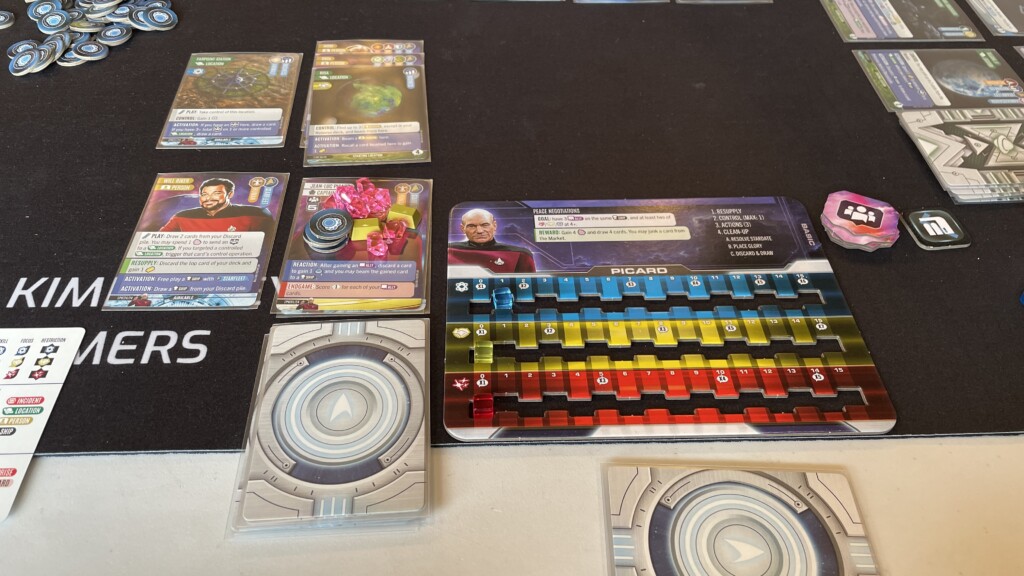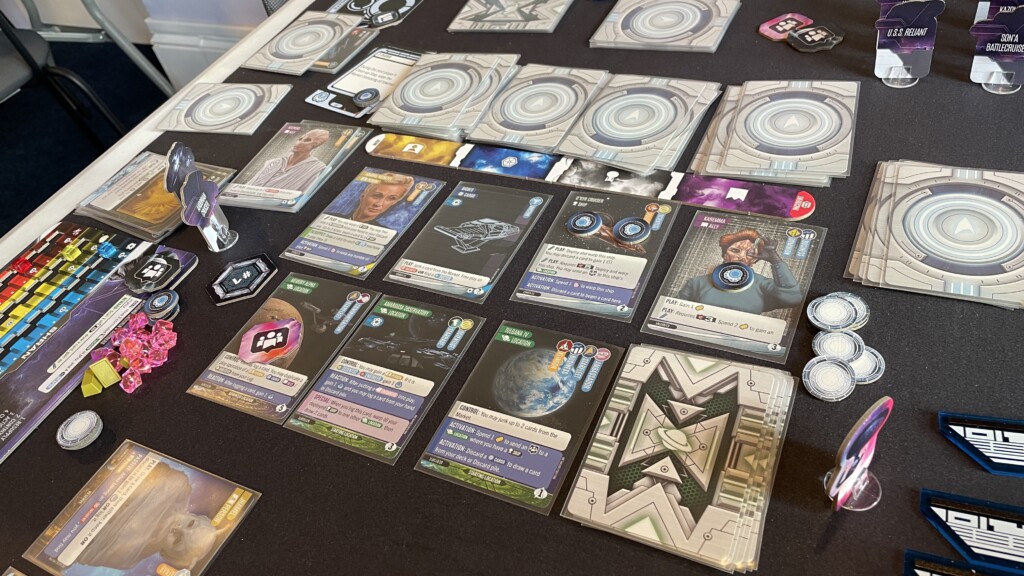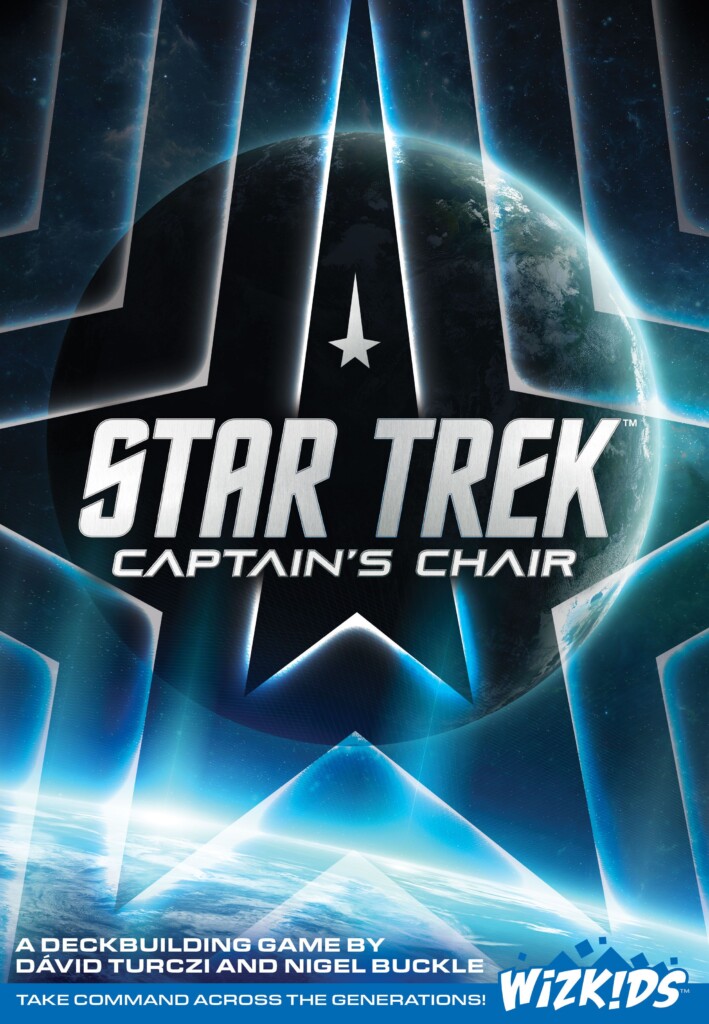Star Trek: Captain’s Chair has you boldly go where a lot of games have gone before.
Boldly going where one game went already.
Go head-to-head with an opponent, each stepping into the shoes of an iconic captain from across Star Trek’s galaxy and history. Command ships, crew, and away teams while you manage resources and alliances!
Star Trek: Captain’s Chair Game Overview
Quick Rules Summary
It’s more than just a deck-building game, it’s very in-depth so I’ll just give a quick top level overview.
Players each have a deck based on a famous Captain, I had Picard.
You use normal deck building rules but some cards require actions to use and you only have 3 per round.
Some cards in play have an ‘activation’ that can be used once per turn, not all of them use one of your 3 actions.
The main actions include sending away teams and ships to planets which you can claim using an area control mechanism.
You can recruit someone from your hand as the Duty Officer which takes them out of your deck, but gives you an ability each turn.
Gain new cards such as Allies, Ships, Cargo and People. Abilities include gaining resources.
Cycling the deck is a major part of the game too. When you need to reshuffle you add the top card of a face down reserve deck to your hand, these are better cards than you base starting deck.
When your reserve deck runs out, you can then recruit from a selection from an even stronger development deck.
How do you win?
There are 4 round cards each with a stack of Glory tokens. At the end of each players turn they put one of those tokens on a card. If someone takes that card they gain the token.
When the last token is taken the round card is moved and tokens are placed on the next one. When the last card has been resolved the game ends.
You get 1 point per Glory token which can also be gained during the game. You also get 1 point for each of your away teams and ships on neutral (unowned) locations.
Cards you gain from your reserve, development or the supply may have points, some cards in your deck will also award end game points.
There are “Incident” cards that you can gain and lose over the course of the game that are worth negative points.
Some cards have symbols and symbol multipliers which score, but only if you completed your mission on your captain board.

Main Mechanisms
Deck-building is the main mechanism and controls all of the game. You technically have 3 action points and there is a bit of set collection for scoring.
You also have that bit of area control when trying to gain control of neutral planets.
USP
Well, Star Trek has been done a lot before and this game is based on Imperium so I don’t think we have a USP here.
Theme
I watched Next Generation, Deep Space 9 and some Voyager back in the day but I’m not a Trek fan. So as a non-fan, I don’t know how to feel about how things are.
Should I be mad that a character from one show is on a ship with a character from another? maybe not as the game is based in a simulation?
Setup
Piles of cards everywhere!
Components & Artwork
The ship standees and dual-layered boards are all OK and do a good job. The resources are really nice and the “isolinear chip” (I think) action tokens are really cool.
The art is OK and the iconography is really good and it needs to be because it is plentiful!

Ease of Teaching
Not easy at all. Well, OK, it’s easy to play, it’s hard to play well. So, it’s easy to teach the rules but hard to teach strategy, especially with cards in hand ‘hidden’.
Each Captain has their own difficulty level so start a newbie off with Picard and go from there.
Similar Games
Eminent Domain and Legendary Encounters: Firefly give an epic space exploration feeling in deck-building form.
Star Trek: Captain’s Chair Review
Positives
It reflects the Star Trek universe really well.
All the actions make thematic sense.
There are 6 captains to choose from each playing differently, but also with different difficulty levels.
Theres a lot going on which means you can score points in different ways.
The components are really nice and the icongraphy helps out gameplay.
Negatives
It’s long and turns are slow leadiing to a lot of downtime, even with just 2 players.
It’s only two players max, I feel 4 players taking one action each on a turn would make the game play quicker and add more to the ‘area control’ aspect of the neutral planets.
I’m not a fan of the competativeness around controlling neutral planets. Feels like it should be ‘race to a target’ rather than ‘area control’
Summary
A very good game that is more than just a Star Trek themed deck-building game.
Jesta ThaRogue



Leave a Reply